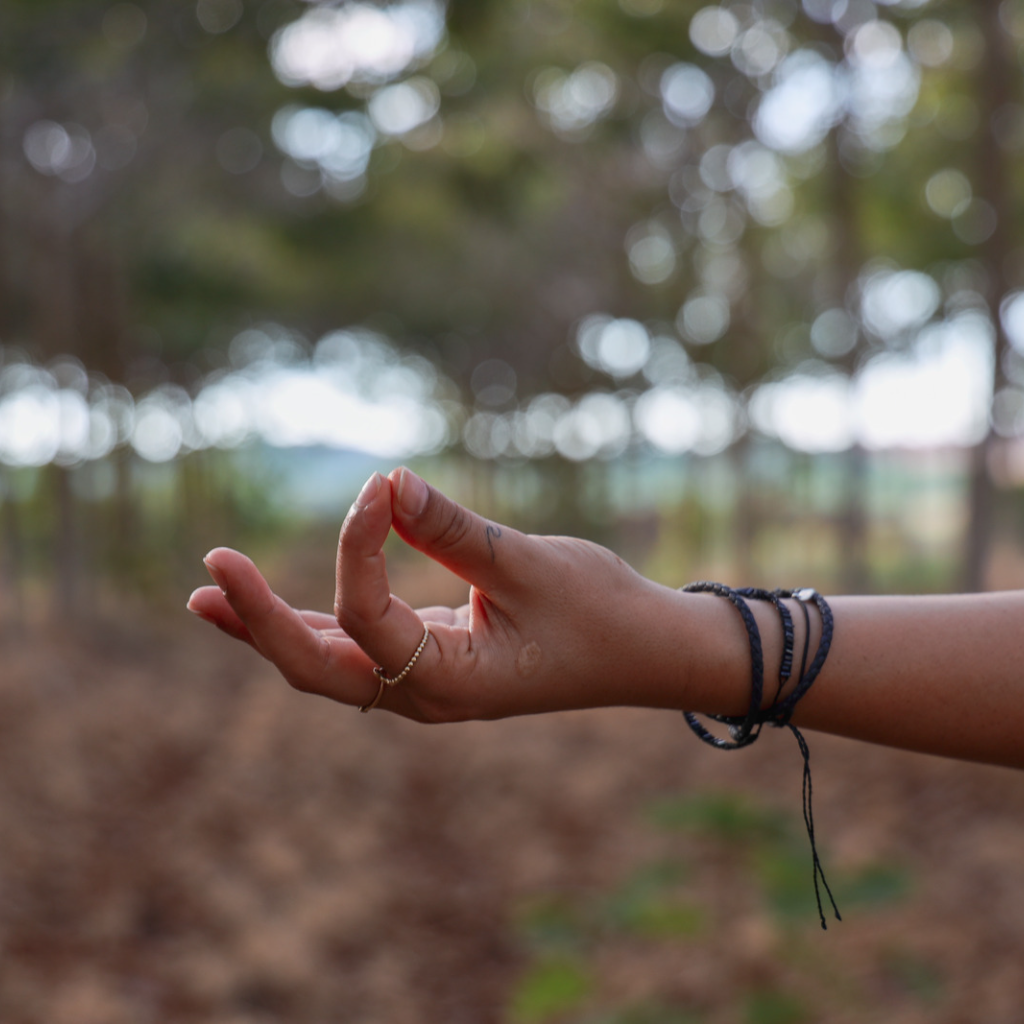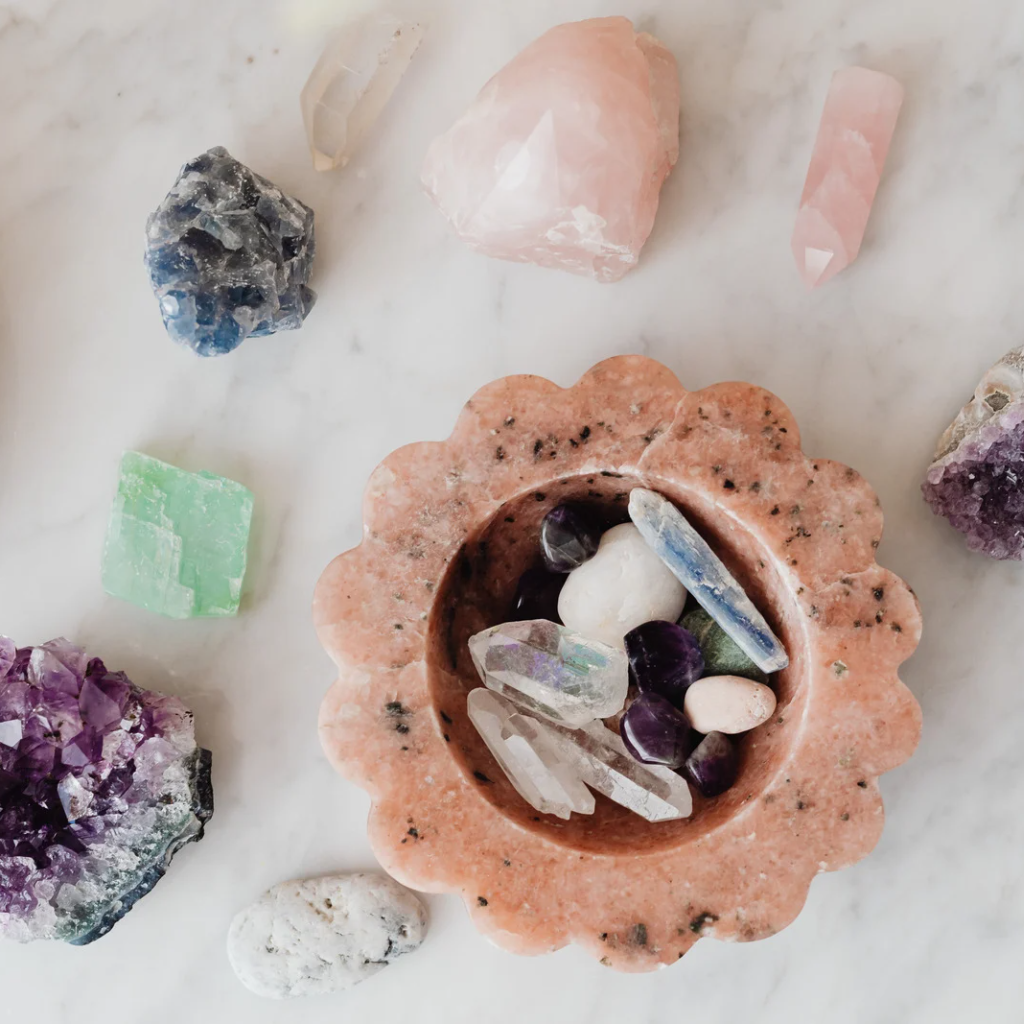New Moon Yoga Practice For 2022

Sun salutations rightly feature regularly in yoga classes everywhere. They represent the sun’s energy and so are invigorating, challenging, energising and uplifting - but how often do we pay attention to their sister moon salutations?
Moon salutations are slower, more grounding, and harness the intuitive, feminine energy of the moon. For that reason, I lean into them regularly when I’m free-flowing on my mat. You may find that moon salutations have an even more powerful impact when you practice them deliberately in synchronicity with the moon.
How Are The Sun And Moon Relevant In Yoga?
Yoga classes are full of people trying to find balance.
Perhaps they are literally trying to cultivate balance in their body, practising moving in a more deliberate, careful way.
Many of us are there trying to find emotional, spiritual, or mental equilibrium. Our favourite yoga studio might feel like the antithesis to our otherwise frantic, noisy lives.
That’s exactly what we’re embracing in yoga class - those binary opposites: chaos and calm; noise and silence; stress and release; ebb and flow. In our posture, meditation and breath work we’re not shying away from any of these sensations. Instead we invite them in and try to lean into observing these polar opposites without judgement or attachment.
The sun and the moon represent and reflect these energies.
The sun, and its representative sun salutations, brings a ‘yang’ energy: dynamic, warm and bright. The ‘ha’ of hatha yoga reflects this, ‘ha’ referring to the warming energy of the sun.
The moon, the ‘tha’ of hatha yoga, on the other hand, is connected to a more intuitive, quiet, cooling vibe.
Whilst these two energies seem to sit at opposite ends of the spectrum they are in fact perfectly balanced and complementary. Hatha yoga seeks to bring them together to help us move through this world with more balance and equilibrium. 
Why Is The New Moon Particularly Significant?
The new moon is the first lunar phase, during which the moon comes between the sun and the earth and so from our perspective, appears to disappear.
What we are seeing is the ‘dark side’ of the moon - the side not illuminated by the sun. It follows that whilst we are presented with this darker face of the moon, we too can be feeling a little darker or gloomier, perhaps a little slower.
For many of us, this is a fabulous time to embrace our more introspective nature and take inventory. It’s time for a duvet day, to absolve ourselves of any pressure to socialise, return texts, or generally ‘show up’ for others. It’s absolutely OK to take a little introverted ‘me’ time.
It’s also a time of great awareness. Whilst you’re taking stock, ask yourself: what isn’t serving me? And what would I like to welcome in?
This is the perfect time in the lunar calendar to set fresh intentions and revisit your goals, hopes, and aspirations.
How To Make The Most Of This Phase?
Think of this as the perfect time to usher in new beginnings. Whether it’s a significant life change like a new career or relationship, or a more subtle adjustment to your health or work-life balance. This is the time when you are most receptive and ready for a fresh start. Manifest the change. Write an affirmation, journal, write a letter to your future self from your present self, or make a mood board. When we see it, our consciousness shifts and we start to see the opportunities to create meaningful change.
A Moon Salutation Sequence For The Next New Moon - March 2nd 2022
As with sun salutations, there are different incarnations of moon salutations, and every teacher will instruct slightly differently.

Moon Salutations Sequence
In this sequence, face the long edge of your mat and move from right to left.
- Begin in tadasana (mountain pose), Take a deep breath in and as you exhale, allow the eyes to close. Release tension from the forehead and jaw. Notice the breath and the movement of the breath in the body. Set an intention to release stagnant energy and usher in the new. Blink the eyes open.
- Inhaling, extend the arms skyward into urdhva hastasana (upward salute). Interlace the fingers and allow the index fingers to point skywards.
- Exhaling, take a lean to the right into standing crescent pose. Notice the stretch into the left side body. Draw the navel to spine to gently activate the abdominal muscles and protect the lumbar spine.
- Inhaling, move to centre.
- Exhale to stretch left into standing crescent pose.
- Inhale back to centre.
- Step the feet wide, turn the toes outwards and soften the knees into goddess pose. Option: leave the hands resting on the thighs or open the arms out into a cactus shape, allowing thumb and index finger to touch in Anjali mudra.
- Inhaling, turn both feet to the right and take arms out wide and straight. Exhaling, reach over the right leg to move into trikonasana (triangle pose). Drop the back of the right hand to shin, ankle, or allow the fingertips to kiss the floor. Take the left hand to the top hip or extend up to the sky. Inhaling, find length in the torso. Option: rotate the left side of the rib cage to open up to the sky.
- On an exhale, move the left hand down to frame the right foot. Turn both hip points to shine forward over the right leg and take a bow to fold over the front foot into parsvottonasana (pyramid pose).
- Inhaling, step the back foot further back. Soften the right knee into a lunge. Check that the right knee isn’t travelling over the right ankle. Push the back thigh skywards and backwards.
- Exhaling, move the body over the right leg and bring both hands over to the big toe side of the right foot. Rotating your body to the long edge of the mat, move into skadasana (side lunge). You can play with the balance here, floating your hands above the mat, or perhaps allowing them to rest at the heart space in anjali mudra, or even allowing them to reach overhead.
- Inhaling, move to a squat in the middle of the mat. Exhale to rise to goddess.
- Inhale to turn to the left side of the mat and reverse the sequence, beginning with skadasana to the left, moving to a lunge over the left knee, then parsvottonasana, trikonasana, and back to goddess pose.
What do you think? Are you really feeling the power of the lunar energy? Or is this your first time attempting to find some synchronicity with our lunar calendar?


Leave a comment